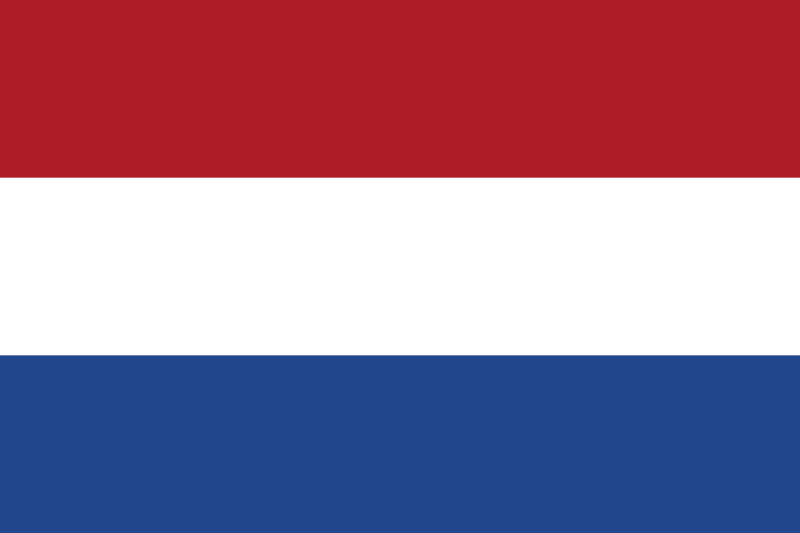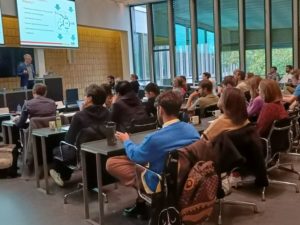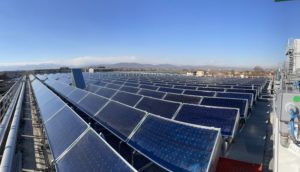Holland Solar celebrates its 25th Anniversary
November 3, 2009
Celebrating 25 years of Holland Solar: Amersfoort won the award for the best solar thermal community in the Netherlands. The picture shows Pauline Sparenburg from the climate and energy administration of Amersfoort accepting the award at the celebration.
Holland Solar, Netherland’s national association for the solar energy industry, has turned 25 this year. At a one-day congress called “Sun Energy in the Netherlands: Past – Present – Future” at the beginning of October in De Reehorst Te Ede, with 250 people attending, a new position paper on “Solar Heat” was presented. One highlight was the award to Amersfoort for being the “best solar energy community in the Netherlands”.
“The future without solar energy is unthinkable,” Arthur de Vries, the Secretary of Holland Solar, said when he presented the new position paper about solar thermal energy development between 2009 and 2020. The estimates for the market depend on political frame conditions and the authors of Holland Solar have thus made out four different scenarios.
• If the inconsistencies in the government policy continue, as they would in the first scenario, the Netherlands “will be one dark island in an otherwise sunny Europe”.
• In the business-as-usual scenario, the authors assume a policy of moderate support, leading to annual growth rates of 15 % until 2020.
• Growth rates of the “Working on the objectives” scenario vary between 25 % and 35 % per year, depending on the intensity of support. This would correspond to the average growth rate in Europe over the past 6 years (25 %) and the increase in Germany over the same period (35 %).
• The last scenario is concerned with reaching the objectives of the European RES Directive. An annual growth rate of 45 % to 50 % would be necessary, in order to reach the proportional share of the RES. The ability to achieve such figures would require the development of a “Delta-Plan”, by which the government and the solar energy market need to cooperate closely in developing instruments to influence the market.
One example mentioned in the position paper is economic investment in combination with good credit supply. Homeowners, the commercial sector or the agriculture industry are just some examples for market segments on which a policy could focus. The industry alone cannot bring about such fast a transition, but assistance from a strong and dynamic government could make it work.
Besides the congress, there was an award to accept for Netherland’s best solar energy community: Nominated were Amersfoort, which won, and two other communities, Heerhugoward and Nijmengen. “These communities show a lot of ambition when it comes to promoting solar thermal energy,” Bert Brouwer, a solar thermal industry expert and one of the first members of Holland Solar, said at the award ceremony.
Holland Solar was founded as the trade and representative association for solar energy in the Netherlands on 18 October 1983. Today, the organisation has 70 members, ranging from suppliers to producers, from consulting firms to research facilities. Its many activities are mainly dealing with information and knowledge transfer, in order to promote solar energy applications in the Netherlands. They also include talks with local and national government institutions in the process.
More Information:
http://www.hollandsolar.nl
http://www.solardays.nl
Text was written by communication specialist Hanna Schober based in South Africa. Schober@solrico.com


